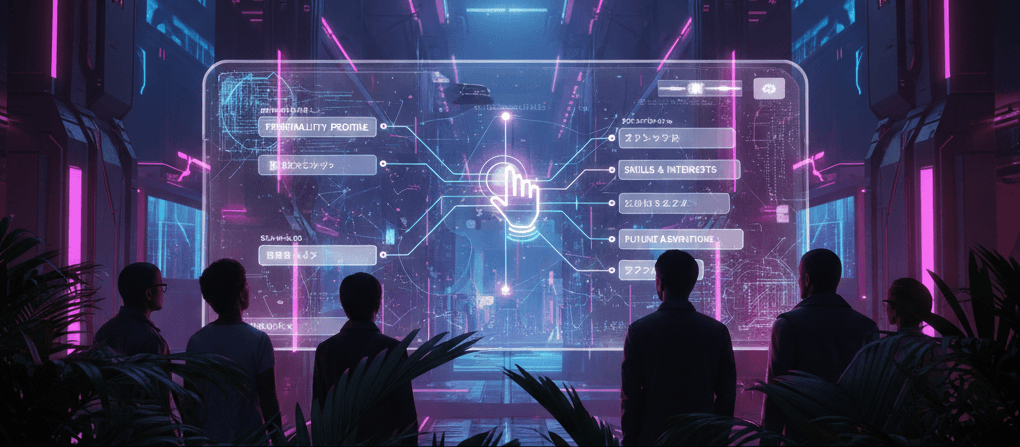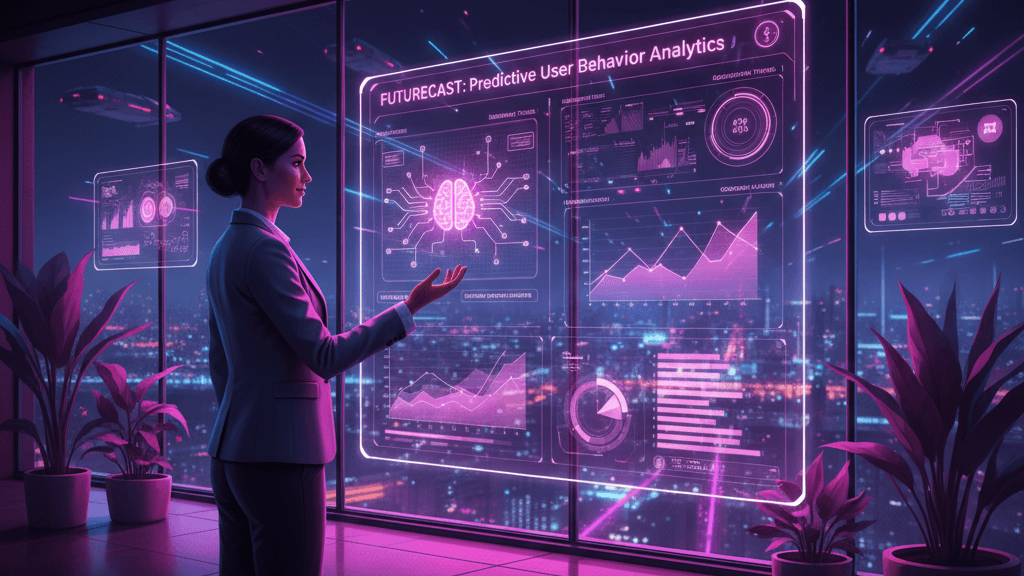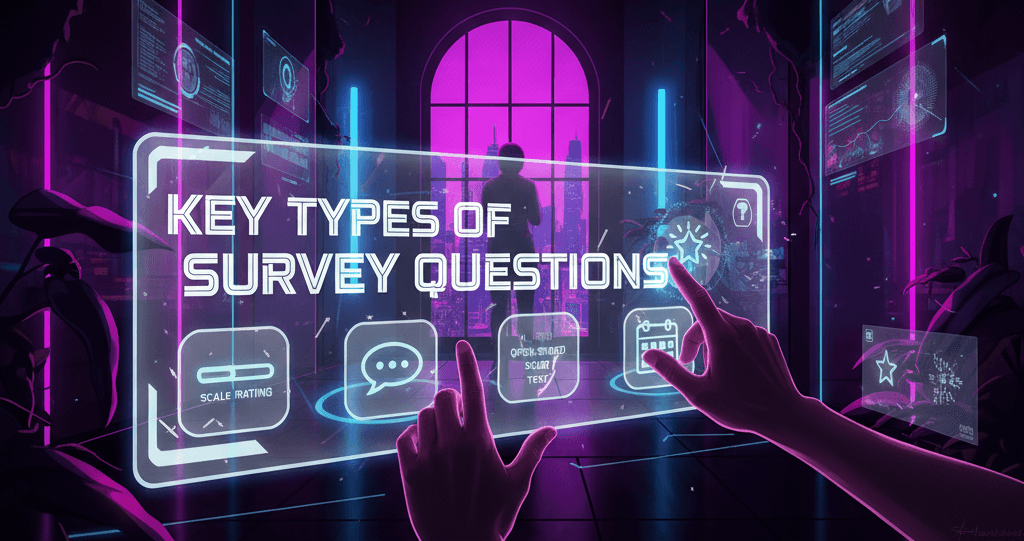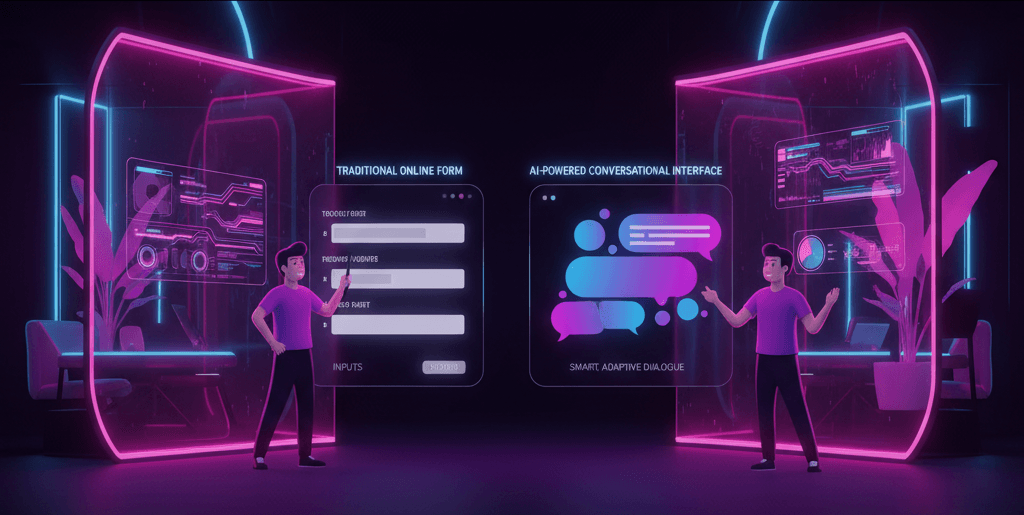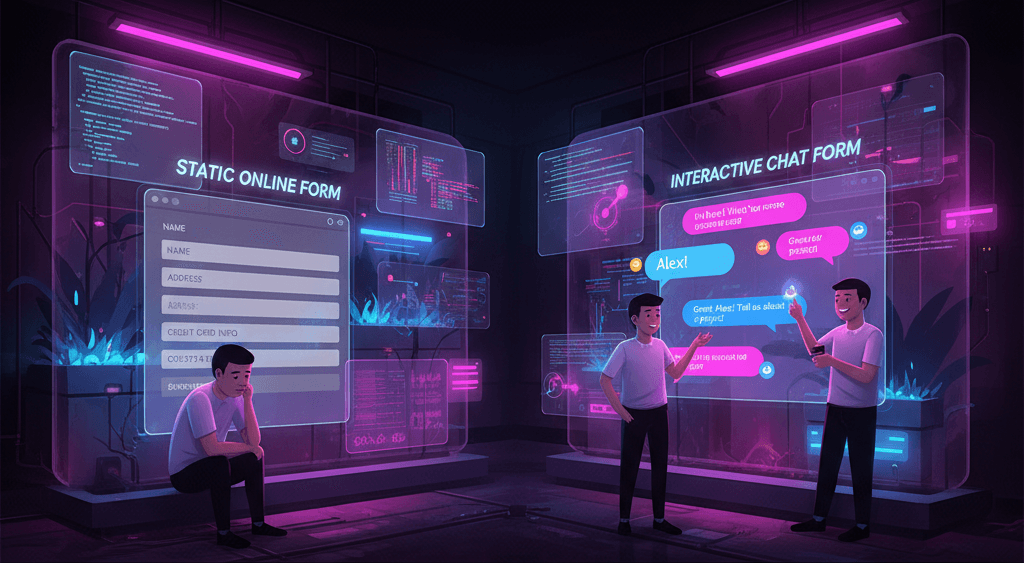The way businesses approach customer service has undergone a seismic shift in recent years, and at the base of that transformation is artificial intelligence.
Once confined to basic rule-based chatbots that could only handle scripted responses, AI has evolved into a dynamic, conversational, and highly capable force in customer interactions.
With the rise of large language models (LLMs) like GPT-4 and Claude, AI is no longer just assisting agents, it’s becoming the agent.
Companies today are deploying AI-powered systems that can hold human-like conversations, understand customer intent, reference internal knowledge bases, and resolve issues with minimal or no human intervention.
This shift isn’t just about efficiency, it’s about creating fast, frictionless, and personalized experiences that modern customers now expect.
Why 2025 Is a Pivotal Year?
2025 represents a key turning point in the AI-customer service landscape for three big reasons:
Maturity of AI technology
LLMs and transformer-based models are no longer experimental. They’ve become stable, scalable, and enterprise-ready.
Open-source and proprietary models alike are now being fine-tuned for support use cases with impressive accuracy and contextual understanding.
Post-LLM Boom Integration
Businesses that were once experimenting with AI are now integrating it into their core customer operations.
The AI tooling ecosystem, from vector databases to real-time feedback loops, has matured to the point where non-technical teams can deploy powerful agents with ease.
Customer Expectations Have Changed
In a world of instant everything, customers are no longer willing to wait 24 hours for a support reply.
They expect immediate answers, consistent tone, and a seamless handoff between AI and human reps, all of which is now possible with the latest AI.
This guide is designed to help you navigate the rapidly evolving world of AI customer service in 2025.
By the end of this guide, you’ll have a clear understanding of how AI can revolutionize your customer experience and how to implement it in a way that drives real business value.
The Evolution of Customer Service Technology
Customer service has always been the frontline of brand experience.
But how that service is delivered has evolved dramatically, moving from reactive call centers to proactive, AI-driven experiences.
To understand where we are today, it helps to look at where we’ve been.
From Call Centers to Live Chat: The First Digital Shift
In the early 2000s, customer service was largely driven by call centers, teams of agents answering phones, guided by scripts, working with limited context, and often overwhelmed by call volumes.
Wait times were long, service was inconsistent, and scaling meant hiring more people.
The first major technological leap came with live chat widgets on websites. Suddenly, customers didn’t have to pick up the phone, they could type their question and get help in real time.
For businesses, this meant handling more conversations with fewer people, logging interactions digitally, and offering a more modern support experience.
However, live chat still requires human agents behind the scenes, leading to high operational costs and limited coverage outside business hours.
The Chatbot Era and Its Limitations
As automation became a priority, chatbots emerged as a promising solution. These were rule-based systems designed to guide users through predefined flows.
If you’ve ever clicked through a bot that offered a few button options or could only answer very specific questions, you’ve met a traditional chatbot.
They were useful for basic tasks like:
- Checking order status
- Answering FAQs
- Redirecting users to help articles
But the cracks soon showed. Chatbots:
- Struggled with free-form language
- Couldn’t understand nuance or complex queries
- Failed to escalate smoothly to human agents
- Created frustration rather than resolution
By 2018 – 2020, many customers began to dread the phrase: “I’m a virtual assistant, how can I help you?”
The Rise of AI + LLMs: A New Era of Intelligence
The breakthrough came with large language models (LLMs) like OpenAI’s ChatGPT, Anthropic’s Claude, and others.
These models are trained on massive datasets and can generate natural, human-like responses.
More importantly, they can understand context, intent, and nuance in a way previous systems never could.
Unlike rule-based bots, LLMs can:
- Understand natural conversation flow
- Generate custom answers from a business’s knowledge base
- Ask clarifying questions
- Hold multi-turn conversations without losing context
This marked a fundamental shift, from bots that “respond” to agents that can converse, reason, and assist in real time.
The Shift Toward Context-Aware, Autonomous Agents
Now, in 2025, we’re entering the era of AI-powered agents that don’t just respond, they understand.
These agents are:
- Context-aware: They remember previous interactions, understand where a user is in a journey, and reference relevant internal documents in real time.
- Knowledge-integrated: They don’t rely on training alone. They tap into live data product manuals, pricing sheets, and CRM records to give accurate, up-to-date answers.
- Task-oriented: Some can now perform actions, place orders, update account info, send follow-ups, reducing the need for human intervention.
- Customizable: Businesses can shape their tone, personality, and behavior to reflect brand values.
This is where true AI customer service begins.
Not a replacement for humans, but a new layer of intelligence that augments teams, reduces support load, and dramatically improves the customer experience.
Key Benefits of AI-Powered Customer Service
Here are the key benefits that make AI a game-changer for customer service in 2025:
1. 24/7 Availability Without Burnout
One of the most immediate and obvious advantages of AI agents is their always-on capability. Unlike human agents who work in shifts, AI doesn’t need breaks, sleep, or time off.
It can handle customer queries at any hour, whether it’s midnight on a holiday or during peak traffic hours.
This is especially valuable for:
- Global businesses with customers across time zones
- E-commerce platforms with high after-hours activity
- Emergency support scenarios where instant help is expected
With AI, your business can maintain a constant line of communication, improving accessibility and responsiveness for your customers around the clock.
2. Consistent and Accurate Responses
Human agents, no matter how skilled, vary in experience, mood, and interpretation, which can lead to inconsistent responses. AI agents, by contrast, are:
- Trained on a centralized knowledge base
- Programmed to follow the latest policies and tone guidelines
- Able to give the same answer to the same question, every time
This ensures customers get uniform, accurate answers, reducing misinformation, minimizing frustration, and strengthening trust in your brand.
3. Instant Learning from Knowledge Bases
Traditional agents require weeks of onboarding and ongoing training to stay updated. AI can ingest and understand your entire knowledge base instantly, FAQs, product manuals, help docs, internal wikis, and start providing informed answers right away.
Even better, when you update your knowledge base, the AI’s understanding updates with it, automatically. This makes it incredibly agile and always current.
Use cases include:
- Launching new products without re-training your team
- Scaling to new markets with localized knowledge
- Adapting quickly to policy or pricing changes
4. Scalability for Growing Businesses
As your business grows, your support needs grow too. With traditional models, that means hiring and training more staff, a time-consuming and expensive process.
AI changes the equation. Whether you have 10 customers or 10,000, your AI agent can scale with zero increase in response time or resource load.
This makes it ideal for:
- Seasonal spikes in demand (e.g., Black Friday, launches)
- Startups with lean teams
- Fast-scaling SaaS platforms onboarding hundreds of users daily
AI delivers elastic scalability, growing with your needs, instantly and effortlessly.
5. Reduction in Operational Costs
Customer service is often one of the highest operational expenses for businesses, from hiring and salaries to training, management, and infrastructure.
By automating repetitive and low-complexity queries, AI can drastically cut down:
- Support team size
- First-level inquiry volume
- Average handling time (AHT)
- Agent burnout and turnover
This doesn’t mean replacing your team, it means reallocating human agents to higher-value tasks while AI handles the bulk of routine inquiries.
The result? Lower costs, higher efficiency.
6. Enhanced Customer Experience and Satisfaction
Ultimately, AI in customer service is about improving the customer journey. When users get fast, accurate, and helpful answers, without jumping through hoops, their satisfaction soars.
AI contributes to a better experience by:
- Reducing wait times
- Offering contextual, relevant answers
- Avoiding transfers or repeated explanations
- Providing a seamless handoff to human agents when needed
Customers today want effortless support. AI delivers it, and when done right, it feels less like talking to a machine and more like talking to an expert who’s always available.
Common Challenges and How to Overcome Them
Below are the most common issues faced when deploying AI agents, along with proven strategies to solve them.
1. Hallucinations and Misinformation
The problem:
LLMs (Large Language Models) are known to sometimes generate responses that sound confident, but are factually wrong or misleading. This is known as “hallucination.”
In customer service, even a small error can break trust, misguide users, or result in costly outcomes (e.g., wrong refund policies, misleading product advice).
How to overcome:
RAG (Retrieval-Augmented Generation): Combine the LLM with your own knowledge base so the AI “retrieves” relevant information before generating a response. These grounds are answered in your verified data.
2. Lack of Brand Tone or Empathy
The problem:
Raw AI models often lack the human nuance, tone, or emotional intelligence that your brand voice requires. They may sound robotic, too formal, or fail to pick up on a customer’s frustration or confusion.
How to overcome:
Custom prompt templates: Design prompts that guide tone and structure, e.g., “Use a friendly, casual tone. Always thank the customer. End with a helpful suggestion.”
Style fine-tuning: Some LLMs can be fine-tuned on your previous support conversations to better mirror your team’s voice.
Human-in-the-loop feedback: Let support managers review and rate AI interactions during the early phase to teach the AI what “on-brand” looks like.
3. Integration with Existing Tools (CRM, Helpdesk)
The problem:
AI agents can’t reach their full potential in a silo.
To personalize responses or resolve issues, they need access to customer data, ticket histories, and backend tools, which often live in CRMs, helpdesks, or internal dashboards.
How to overcome:
Use APIs and webhooks: Most CRMs and support platforms offer APIs. Use them to fetch user data (e.g., order status, previous issues) and perform actions (e.g., update status, create ticket).
Embed within helpdesk flows: Integrate the AI within existing platforms (like Zendesk, Freshdesk, Intercom) to work alongside your human agents.
Pre-built connectors: Choose an AI platform that offers plug-and-play integrations with major tools, reducing dev effort.
Keeping the AI Updated with Fresh Data
The problem:
Businesses evolve quickly, with new features, updated policies, and pricing changes. If the AI isn’t constantly refreshed with the latest data, it becomes outdated and potentially harmful.
How to overcome:
- Dynamic document sync: Set up automatic syncing from your knowledge base (Notion, Confluence, Google Docs, etc.) so changes reflect in real-time or on a daily schedule.
- Feedback loops: Allow agents and users to flag outdated or incorrect answers, then route these for review and correction.
- Scheduled retraining or refresh: For advanced setups, schedule regular ingestion or vector re-indexing of new documents and FAQs.
5. Data Privacy and Security Concerns
The problem:
AI agents may process sensitive customer data, payment details, personal identifiers, or internal business information. Mishandling this data could lead to privacy violations or compliance issues (GDPR, HIPAA, etc.).
How to overcome:
- PII redaction and anonymization: Ensure the AI scrubs or masks personally identifiable information in logs or analytics.
- On-prem or private deployments: For enterprises, consider self-hosted LLMs or private cloud options to keep data within your controlled infrastructure.
- Strict access controls: Limit which parts of your knowledge base the AI can access based on user role, region, or sensitivity level.
- Audit logs and compliance: Enable tracking of every AI-generated response for auditing, QA, and legal coverage.
Future Trends to Watch in 2025
1) Hyper-Personalized Customer Interactions
AI is enabling highly personalized experiences by analyzing user behavior, preferences, history, and intent in real time.
Support agents can now deliver tailored messages, product recommendations, and proactive solutions, creating interactions that feel more human and more relevant than ever.
2) AI Agents Collaborating with Humans (Co-Pilot Mode)
Rather than replacing human agents, AI is being used to enhance their performance.
In co-pilot mode, AI assists agents by suggesting responses, retrieving relevant knowledge, and automating repetitive tasks, allowing humans to focus on empathy, decision-making, and complex issues.
3) Multi-Modal AI Support (Text, Voice, Video)
AI systems are expanding beyond text to understand and interact through voice, images, video, and even screen content.
This opens new possibilities for support experiences that adapt to how users prefer to communicate, whether that’s speaking, showing, or typing.
4) AI-Driven Proactive Support
AI can now anticipate customer needs before they arise.
By analyzing usage patterns, drop-offs, and support history, AI systems can trigger helpful suggestions or intervention at just the right time, minimizing frustration and boosting retention.
5) Integration of AI in Non-Traditional Support Channels
Support is no longer confined to websites and apps. AI agents are increasingly embedded in community platforms like Discord, messaging apps like WhatsApp, and even internal tools like Slack, delivering faster, more natural help wherever users already are.
6) Evolving Regulations Around AI Usage
With increased adoption comes greater regulatory focus. New laws are emerging to enforce transparency, data protection, and fairness in AI systems.
Businesses are expected to disclose AI usage, ensure ethical training data practices, and respect user consent and privacy at every step.
Also Read: Unlock the power of AI in market research
Getting Started with AI Customer Service
1) Choosing the Right AI Customer Service Platform
Start by evaluating platforms that align with your business size, technical needs, and long-term goals. Look for:
- LLM-based capabilities (like GPT, Claude, etc.)
- Integration options with your existing tools (CRM, helpdesk, eCommerce platforms)
- Customizability — to control tone, behavior, and knowledge ingestion
- Security & compliance features (especially if handling sensitive customer data)
- Analytics & feedback tools for continuous improvement
Don’t just chase features, focus on usability, flexibility, and support quality from the provider.
2) Preparing and Structuring Your Knowledge Base
Your AI is only as good as the information you feed it. Build a clean, organized, and up-to-date knowledge base that includes:
- FAQs and help articles
- Product documentation
- Return, refund, and shipping policies
- Internal notes (when appropriate)
- Historical support interactions (as anonymized examples)
Structure your content in clear language. Use headers, bullets, and consistent formatting to improve the AI’s ability to retrieve relevant answers.
3) Defining the Agent’s Personality and Tone
Your AI agent should reflect your brand. Decide early whether you want a formal tone, friendly and casual interactions, or something industry-specific (like professional and concise in finance or fun and witty in gaming).
Include:
- Greeting style
- Use of emojis or slang (if any)
- Escalation language (e.g., how it hands off to a human)
- Apology and empathy expressions
A well-defined tone builds customer trust and creates a consistent experience across touchpoints.
4) Training Tips: Testing, Refining, and Improving Responses
Launch with a test phase. Use sandbox environments or limited rollouts to simulate real queries and refine the agent’s behavior.
Best practices include:
- Testing with both common and edge-case queries
- Reviewing conversations for gaps or hallucinations
- Using RAG (Retrieval-Augmented Generation) to ground answers in the knowledge base
- Implementing feedback loops where users can rate responses or flag issues
- Enabling human-in-the-loop review for sensitive workflows
- Iterate continuously. Your AI support should improve every week.
5) Key Metrics to Track
Track the right metrics to measure performance and guide optimizations:
- Resolution Rate – Percentage of issues resolved without human intervention
- Customer Satisfaction Score (CSAT) – Post-interaction feedback
- Average Handling Time (AHT) – Time to resolution
- Containment Rate – % of conversations that didn’t require escalation
- Fallback Rate – How often the AI says “I don’t know” or fails to respond
- Escalation Accuracy – Whether it handed off issues at the right time
Use these insights to refine your training and improve agent performance.
6) Best Practices for a Smooth Rollout
- Start small: Launch AI on one channel or for a specific use case (e.g., FAQs or order tracking).
- Communicate clearly: Let customers know they’re interacting with AI, transparency builds trust.
- Provide an easy fallback to human agents for complex issues.
- Monitor early conversations closely and use them as learning material.
- Celebrate wins: Share results internally, improved response times, or lower ticket volumes help get buy-in.
Wrapping Up
AI is reshaping the customer service landscape, and in 2025, the shift is no longer optional. With more mature technology, better data handling, and rising customer expectations, businesses that move fast will have a clear edge.
This guide covered how to adopt AI thoughtfully: from choosing the right tools and preparing your content, to building brand-aligned agents and tracking the right success metrics.
Whether you’re scaling support, reducing costs, or aiming to delight users 24/7, AI can make it happen.




